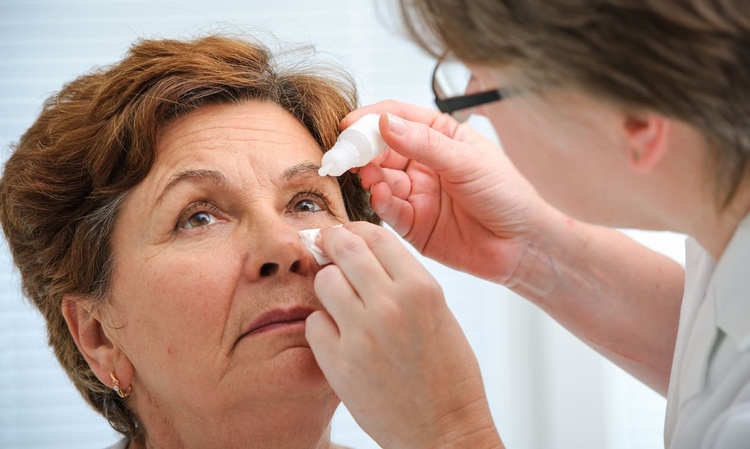Knee Gel Treatment Explained: Relief, Procedure, and Benefits
Knee gel treatment, also known as hyaluronic acid injections, offers a modern and minimally invasive way to relieve chronic knee pain caused by osteoarthritis or joint wear. It’s designed to restore lubrication, improve mobility, and delay the need for surgery. This procedure has become increasingly popular among people seeking effective pain management and improved quality of life. Understanding the relief it provides, its long-term benefits, and what to expect during the process can help patients make confident and informed health decisions.

Knee gel injections, medically known as viscosupplementation, have emerged as an important treatment option for individuals suffering from knee pain, particularly those with osteoarthritis. These injections deliver a gel-like substance—typically hyaluronic acid—directly into the knee joint to supplement the naturally occurring joint fluid that provides lubrication and shock absorption. For many patients, this procedure offers meaningful relief when conservative treatments have proven insufficient but before surgical intervention becomes necessary.
What Are Knee Gel Injections and How Do They Work?
Knee gel injections primarily consist of hyaluronic acid, a naturally occurring substance found in the synovial fluid of joints. This viscous fluid acts as both a lubricant and shock absorber, allowing joints to function smoothly. In osteoarthritis patients, this natural hyaluronic acid becomes diluted and breaks down, leading to increased friction, inflammation, and pain.
When administered into the knee joint, the gel-like hyaluronic acid supplements the joint’s natural fluid, improving lubrication and potentially reducing inflammation. Some formulations provide immediate cushioning effects, while others stimulate the joint to produce more of its own hyaluronic acid over time. The treatment essentially restores some of the knee’s natural shock-absorbing abilities that have diminished due to osteoarthritis or injury.
The Procedure: What to Expect During Hyaluronic Acid Therapy
The knee gel injection procedure is relatively straightforward and typically performed in a doctor’s office. First, the knee area is cleaned and may be numbed with a local anesthetic to minimize discomfort. Using ultrasound guidance in some cases, the physician precisely inserts a needle into the knee joint space and injects the hyaluronic acid preparation.
The entire procedure usually takes less than 30 minutes. Depending on the specific product used, patients may receive a single injection or a series of three to five injections spaced one week apart. After the injection, patients are usually advised to avoid strenuous activities for 48 hours but can typically resume normal activities shortly thereafter. Some minor swelling or discomfort at the injection site is normal and generally subsides within a day or two.
Benefits of Knee Gel Injections for Osteoarthritis Treatment
For many osteoarthritis patients, knee gel injections offer several potential benefits. The primary advantage is pain relief, which typically begins within a few weeks after treatment and may last six months to a year in responsive patients. This extended relief period represents a significant benefit compared to oral pain medications or corticosteroid injections, which often provide shorter-term relief.
Beyond pain management, hyaluronic acid therapy may improve joint mobility and function, allowing patients to engage in daily activities with greater ease and comfort. Some research suggests these injections might have mild anti-inflammatory properties and could potentially slow cartilage degeneration, though more studies are needed to confirm these effects.
Patients often appreciate that the treatment doesn’t involve daily medication, reducing concerns about systemic side effects or drug interactions. For those looking to delay or avoid knee replacement surgery, viscosupplementation can be a valuable intermediate treatment option.
Non-surgical Pain Relief Options Compared
Knee gel injections represent one of several non-surgical approaches to managing knee osteoarthritis. When considering treatment options, patients and physicians typically evaluate various interventions based on effectiveness, duration of relief, invasiveness, and potential side effects.
Physical therapy and exercise remain foundational treatments, strengthening muscles around the knee and improving joint stability without directly addressing the internal joint environment. Oral medications like NSAIDs provide systemic pain relief but may cause gastrointestinal or cardiovascular side effects with long-term use. Corticosteroid injections deliver powerful anti-inflammatory effects but typically last only 1-3 months and may accelerate cartilage breakdown with repeated use.
In this spectrum, hyaluronic acid therapy occupies a middle ground—more invasive than oral medications but less so than surgery, with longer-lasting effects than corticosteroids for many patients and potentially fewer side effects than long-term NSAID use.
Cost Considerations for Knee Gel Treatments
The cost of knee gel injections varies considerably based on geographic location, the specific product used, and whether the treatment is covered by insurance. Most hyaluronic acid products range from $500 to $1,500 per injection, with complete treatment courses potentially costing $1,500 to $5,000 when multiple injections are required.
| Treatment | Provider Type | Approximate Cost Range |
|---|---|---|
| Synvisc-One (single injection) | Orthopedic specialist | $1,000-$1,500 |
| Euflexxa (series of 3) | Orthopedic specialist | $1,200-$2,000 |
| Orthovisc (series of 3-4) | Sports medicine physician | $1,500-$2,500 |
| Hyalgan (series of 5) | Pain management specialist | $1,800-$3,000 |
Prices, rates, or cost estimates mentioned in this article are based on the latest available information but may change over time. Independent research is advised before making financial decisions.
Many insurance plans, including Medicare, cover these injections for patients meeting specific criteria, typically those who have failed to respond to more conservative treatments. However, coverage policies vary widely, and patients should verify coverage details with their insurance provider before proceeding with treatment.
Who Is a Good Candidate for Hyaluronic Acid Knee Treatment?
Knee gel injections are not universally appropriate for all patients with knee pain. They tend to be most effective for individuals with mild to moderate osteoarthritis who have not found adequate relief from conservative treatments like physical therapy, weight management, and over-the-counter pain medications.
Patients with severe osteoarthritis—characterized by significant joint space narrowing or bone-on-bone contact—generally experience less benefit from viscosupplementation. Similarly, those with inflammatory arthritis like rheumatoid arthritis may not respond as well to these treatments. Individuals with active knee infections, skin infections near the injection site, or certain allergies to injection components are not suitable candidates.
The best approach involves a thorough evaluation by an orthopedic specialist or rheumatologist who can assess joint damage through physical examination and imaging studies before recommending appropriate treatment options.
This article is for informational purposes only and should not be considered medical advice. Please consult a qualified healthcare professional for personalized guidance and treatment.




